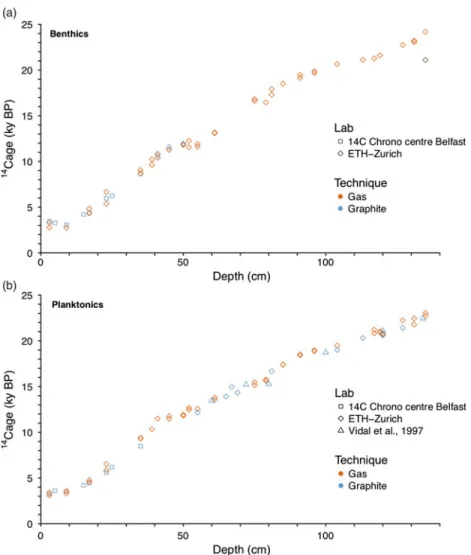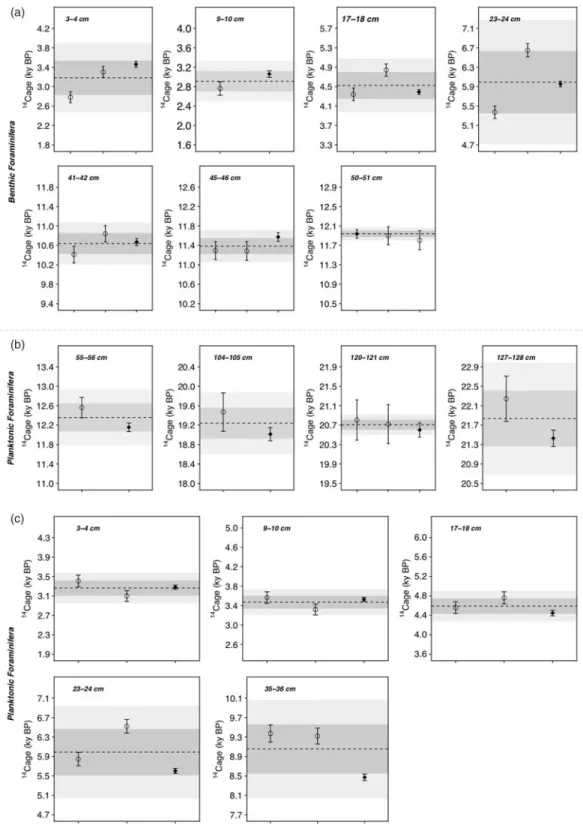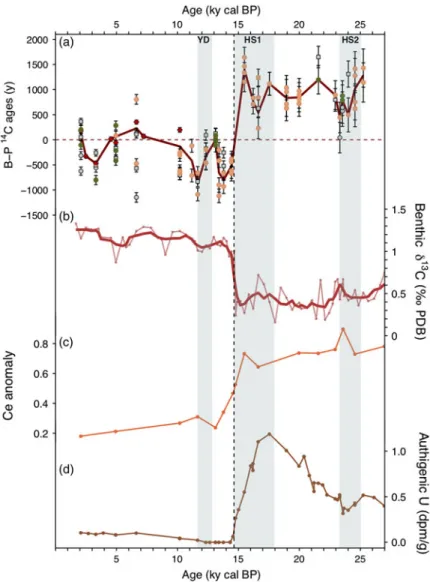Radiocarbon Dating of Small-sized Foraminifer Samples: Insights into Marine sediment Mixing
Texte intégral
Figure




Documents relatifs
The Kramers-Kronig conversion technique has been used to calculate the optical conductivity from the reflectivity data of curves b and c (Fig. The trends seen in the reflecti-
The antecedent variables were lighting quality ratings (appraisal); attractiveness ratings (preference); pleasure ratings (mood); speed of random responding on a target-detection
This brings us naturally to the notion which is the focus of this paper: the weak Stratonovich integral, which is the limit in law, if it exists, of (1.1). Rather, we show that
Based on the above interpretation, in the Luna-16 particle, besides the previously reported metallic iron, probably pyroxene with an admixture of olivine is present,
Impurity color centers in quartz and trapped electron dating : electron spin resonance, thermoluminescence studies.. Spectroscopy, luminescence and Radiation centers
Gas-Chromatographic analysis of Mars soil samples with the SAM instrument onboard Curiosity - the 180 first sols.. European Planetary Science Congress 2013, Sep 2013, London,
Most molecular materials used in organic electronics only exhibit an unipolar behavior, with either electrons or holes as majority charge carriers [1,2].. However, devices
The different principles which have been tested for hydrogen detection are based on the use of electrical measurements to estimate physical gas properties (mass density,


